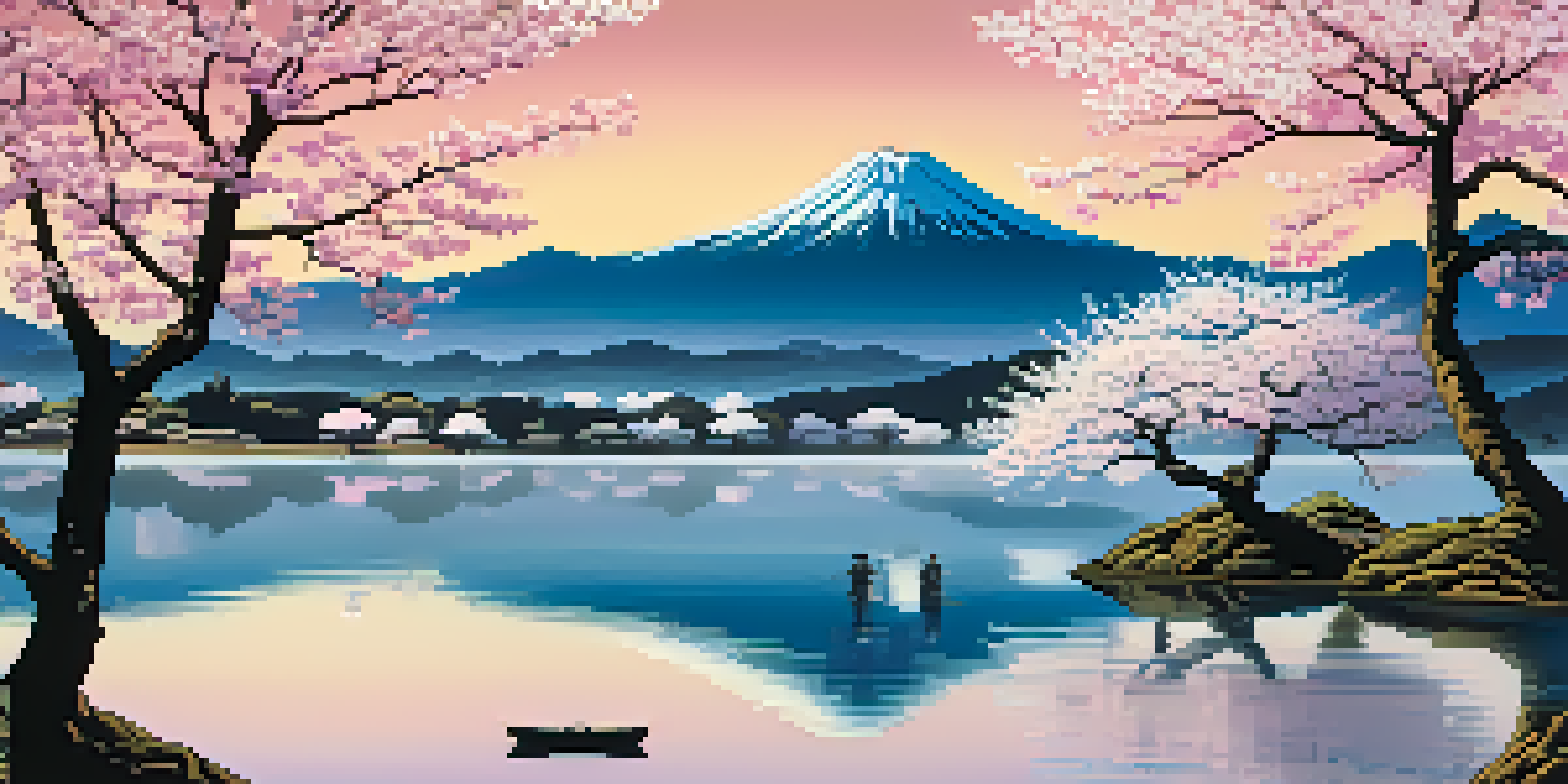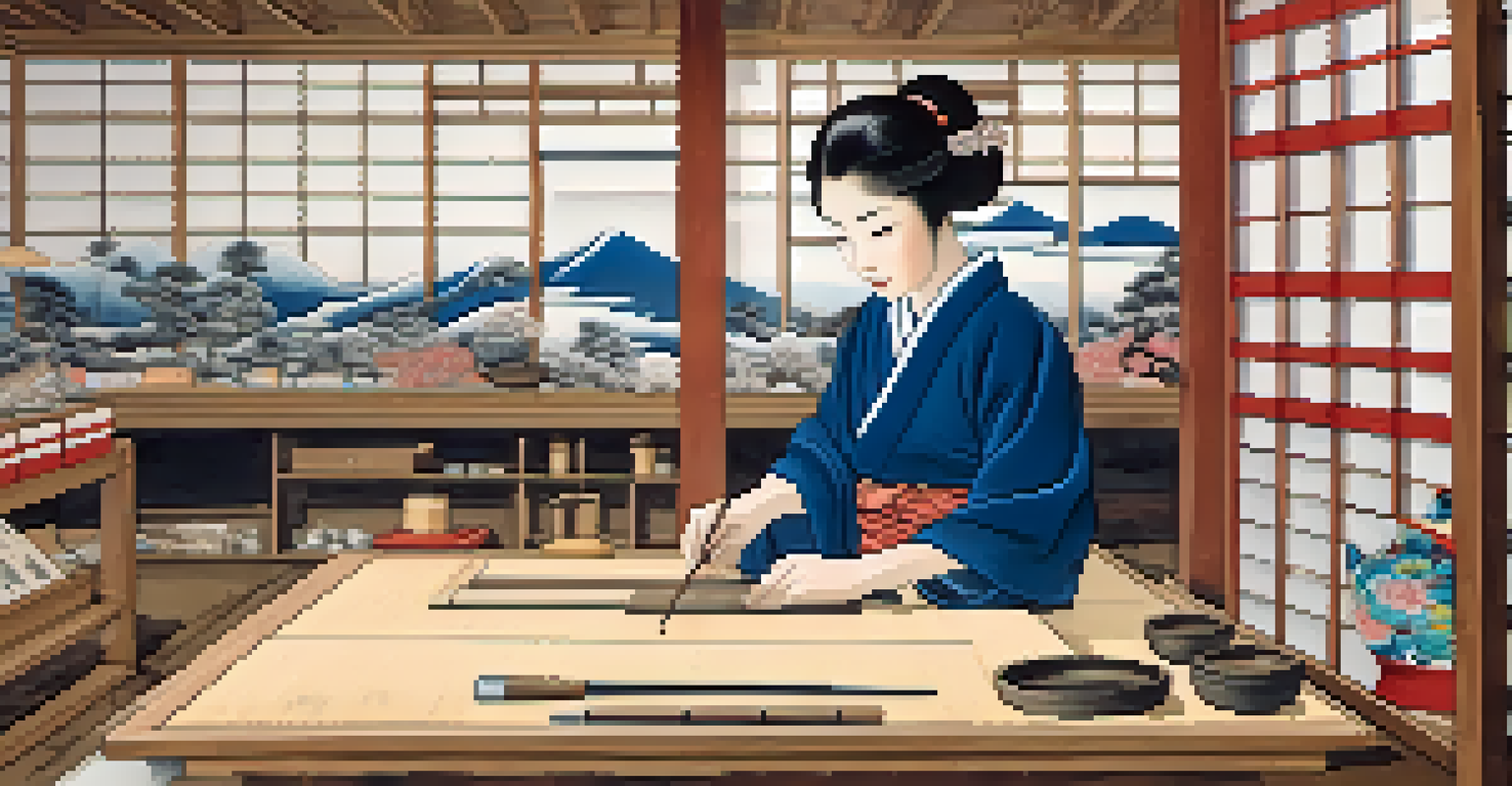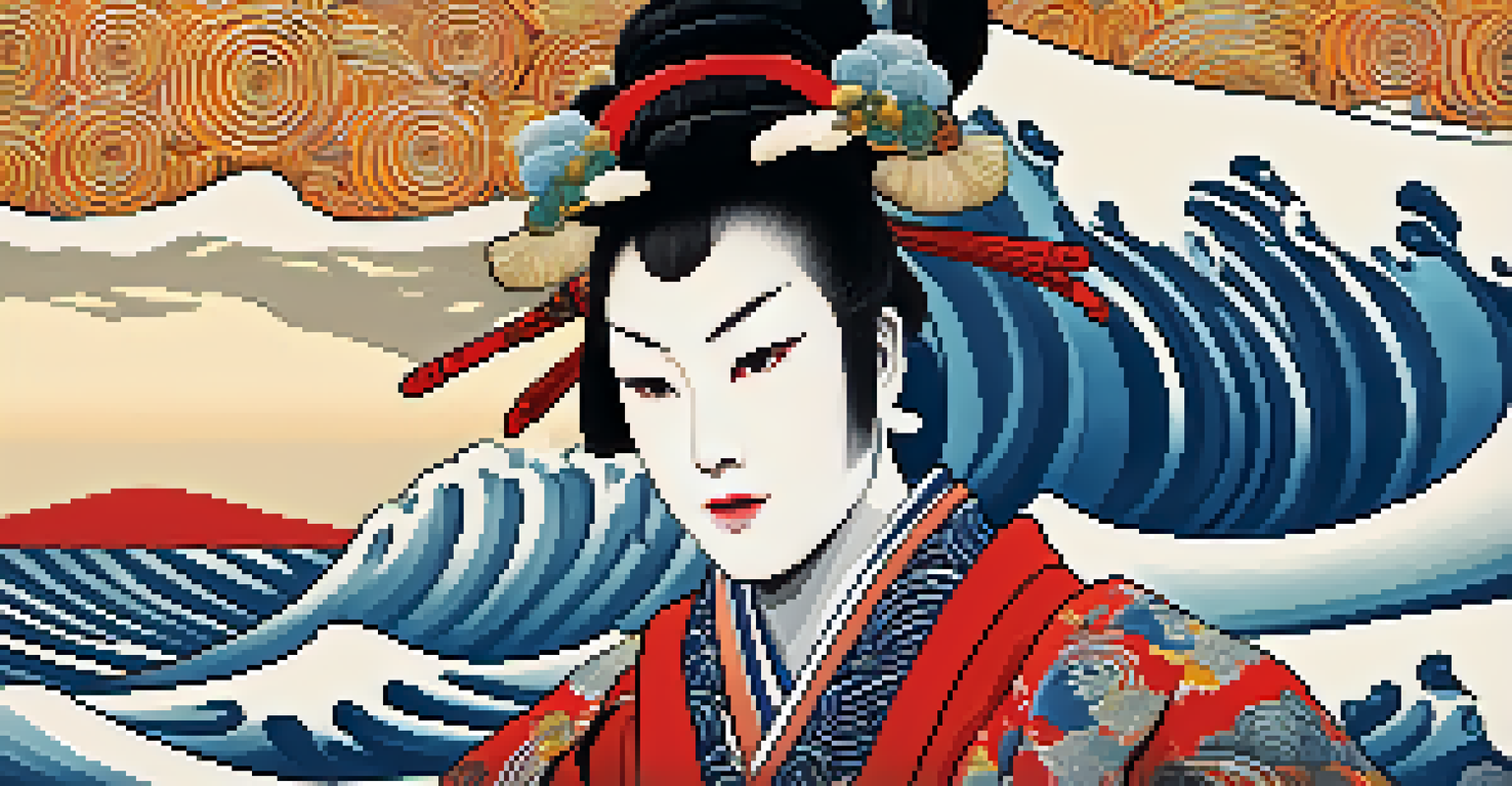Japanese Wood Carving: The Tradition of Ukiyo-e Masters

Understanding Ukiyo-e: A Window into Japanese Culture
Ukiyo-e, which translates to 'pictures of the floating world,' is a genre of Japanese art that flourished from the 17th to the 19th centuries. This art form primarily consists of woodblock prints that capture the beauty of landscapes, kabuki actors, and beautiful women. It's a fascinating blend of artistry and craftsmanship, reflecting the social and cultural dynamics of Edo-period Japan.
Art enables us to find ourselves and lose ourselves at the same time.
The Ukiyo-e masters used wood carving techniques to create detailed images that not only captured moments in time but also told stories. Each print was a collaboration between artists, carvers, and printers, showcasing a harmonious relationship between different crafts. This collaboration is a testament to the community-oriented spirit prevalent in traditional Japanese arts.
Today, Ukiyo-e continues to influence modern art and design, echoing its historical significance. Understanding this art form provides valuable insight into Japanese aesthetics and history, making it a vital part of cultural studies. As we delve deeper, we can appreciate how these prints have shaped perceptions of beauty and nature.
The Intricate Process of Wood Carving in Ukiyo-e
Creating an Ukiyo-e print is a meticulous process that begins with the artist's design, which is then transferred onto a cherry wood block. The carver must carefully sculpt the wood, ensuring that each detail of the design is captured precisely. It’s not just about carving; it’s about breathing life into the wood, making it an extension of the artist's vision.

Once the carving is complete, the block is inked and pressed onto paper, a technique that requires immense skill and precision. This step is where the colors come alive, with each layer of ink meticulously applied to create depth and vibrancy. The final print is often the result of multiple blocks, each representing different colors, showcasing a beautiful tapestry of hues.
Ukiyo-e Reflects Japanese Culture
Ukiyo-e art captures the beauty of Edo-period Japan, showcasing its social and cultural dynamics through woodblock prints.
This labor-intensive process highlights the dedication of Ukiyo-e craftsmen, who often spent years perfecting their skills. The balance between art and technique is what sets Ukiyo-e apart from other forms of printmaking. Each print, therefore, becomes not just a piece of art but a testament to the values of patience and precision inherent in Japanese culture.
Famous Ukiyo-e Masters and Their Legacy
Among the most celebrated Ukiyo-e masters is Hokusai, known for his iconic print 'The Great Wave off Kanagawa.' Hokusai's work epitomizes the beauty of nature and the transience of life, themes central to the Ukiyo-e tradition. His dynamic compositions and innovative techniques have inspired countless artists worldwide, solidifying his place in art history.
Every artist dips his brush in his own soul, and paints his own nature into his pictures.
Another prominent figure is Hiroshige, whose landscapes capture the essence of changing seasons and the beauty of everyday life. His series 'Fifty-three Stations of the Tōkaidō' is a stunning exploration of Japan's scenery. Hiroshige's ability to evoke emotion through landscapes has left a lasting impact on both traditional and modern art.
The legacy of these masters is evident in contemporary art forms, including graphic design and animation. Their influence permeates various artistic expressions, demonstrating the timeless appeal of Ukiyo-e. As we explore their works, we not only appreciate their artistry but also connect with the cultural narratives they represent.
Materials and Techniques in Ukiyo-e Wood Carving
The materials used in Ukiyo-e wood carving are as significant as the techniques themselves. Traditionally, artists used cherry wood for its fine grain and durability, making it ideal for intricate designs. The choice of materials reflects the deep respect for nature and the environment in Japanese culture, emphasizing sustainability.
In addition to wood, the inks and papers used in Ukiyo-e prints are essential to the final product. Natural pigments derived from minerals and plants create vibrant colors that stand the test of time. The washi paper, known for its strength and texture, enhances the quality of the prints, making each piece a unique work of art.
Nature's Role in Ukiyo-e Art
Nature is a central theme in Ukiyo-e, with artists portraying the changing seasons and natural beauty as reflections of life's transitory nature.
Understanding these materials broadens our appreciation for the craftsmanship involved in Ukiyo-e. It’s a reminder that art is not just about the final product but also about the relationship between the artist and their tools. This connection highlights the profound respect for tradition and the environment that characterizes Japanese wood carving.
The Role of Nature in Ukiyo-e Art
Nature plays a central role in Ukiyo-e, often depicted in landscapes, floral motifs, and seasonal themes. Artists like Hiroshige and Hokusai found inspiration in the natural world, capturing its beauty through their woodblock prints. These representations not only celebrate nature but also serve as a reminder of life's transitory nature.
The changing seasons are a recurring theme in Ukiyo-e, with each season bringing its own unique beauty and symbolism. For instance, cherry blossoms in spring symbolize renewal and fleeting beauty, while the vibrant colors of autumn leaves evoke a sense of nostalgia. This connection to nature fosters a deeper appreciation for the environment and its cycles.
Moreover, the portrayal of nature in Ukiyo-e reflects the philosophical beliefs of Shinto and Buddhism, where nature is revered and seen as a source of inspiration. This spiritual connection adds layers of meaning to each artwork, inviting viewers to contemplate their relationship with the world around them. Thus, nature is not just a backdrop in Ukiyo-e; it is an integral part of its narrative.
Ukiyo-e's Influence on Western Art Movements
The impact of Ukiyo-e on Western art cannot be overstated. In the late 19th century, artists such as Vincent van Gogh and Claude Monet drew inspiration from these prints, incorporating their stylistic elements into their own works. This cross-cultural exchange enriched the art world, leading to the development of movements like Impressionism.
Ukiyo-e's bold colors, flattened perspectives, and emphasis on everyday life resonated with Western artists seeking new forms of expression. Van Gogh’s famous works, such as 'Flowering Plum Tree,' showcase this influence, reflecting how Ukiyo-e challenged traditional Western artistic conventions. It opened doors to new ways of seeing and interpreting the world.
Ukiyo-e Influences Western Art
Ukiyo-e's stylistic elements greatly influenced Western artists like Van Gogh and Monet, leading to the development of movements such as Impressionism.
As Western artists embraced these Japanese aesthetics, they not only transformed their own art but also fostered a greater appreciation for non-Western cultures. The dialogue between Ukiyo-e and Western art continues to inspire contemporary artists, illustrating the timeless nature of this artistic connection. Ultimately, Ukiyo-e serves as a bridge between cultures, enriching the global art narrative.
Preserving the Tradition of Ukiyo-e Today
In today's fast-paced world, the tradition of Ukiyo-e faces challenges, yet it thrives through dedicated artisans and enthusiasts. Many contemporary artists are reviving these techniques, blending traditional methods with modern themes. This fusion not only preserves the art form but also keeps it relevant in contemporary society.
Workshops and exhibitions focused on Ukiyo-e serve to educate new generations about this unique art form. By sharing knowledge of the craftsmanship involved, these initiatives foster a deeper understanding and appreciation for Japanese culture. This outreach is vital in ensuring that the legacy of Ukiyo-e continues to flourish.

Furthermore, digital technology has opened new avenues for Ukiyo-e, allowing artists to reach wider audiences. Online platforms showcase these works, bridging the gap between tradition and modernity. As we embrace this evolution, we honor the past while paving the way for the future of Ukiyo-e, ensuring its place in the tapestry of global art.